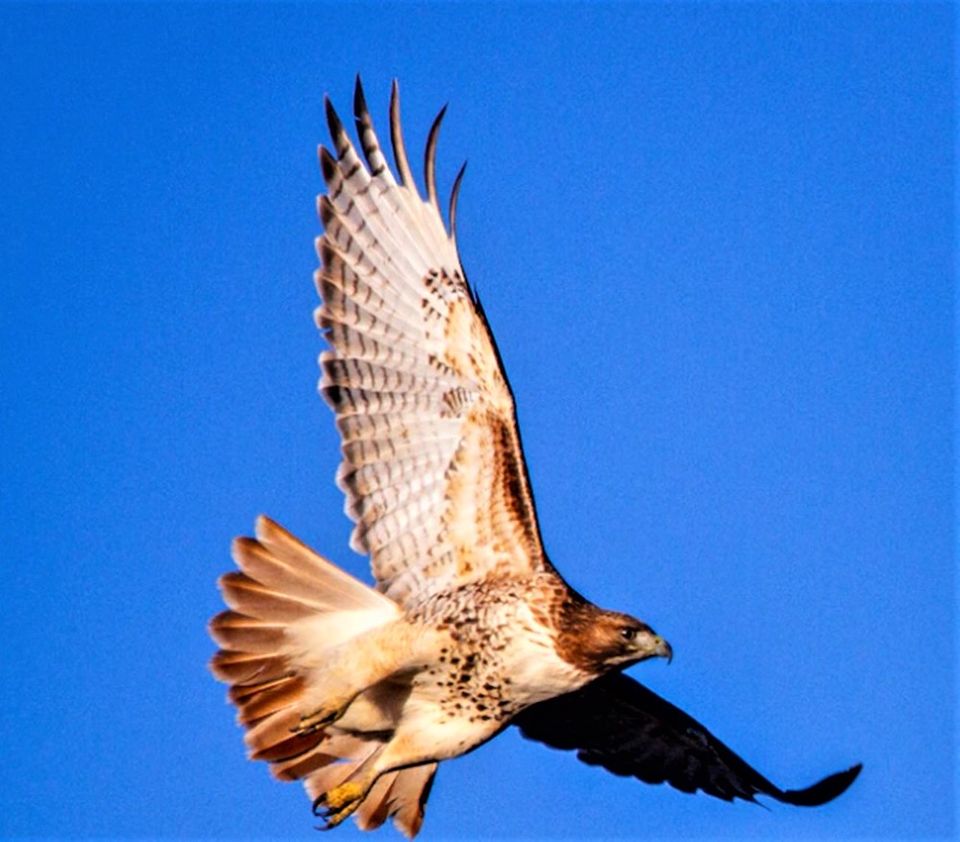Hawks of the Afternoon: On the Beauty and Fear of Isolation

It’s early afternoon on a weekday, during a lull in my patrol of municipal land. The tires of my park ranger truck churn and crunch over hard soil and the remnants of decomposed granite, straining as I ascend the access road of the hillside. In the quiet moments of the day, I might be fortunate enough to see a hawk cresting the pale sky, circling above trees and houses, diving on prey, and giving me a glimpse into the heights of its world.
As I reach the top of the hill, all seems peaceful. I scan a chain link fence to take note of damage — all the places where vandals have clipped thin sections of metal — and examine the condition of surrounding houses, listening to the occasional pit bull as it barks, nodding to the few joggers who sojourn in the afternoon. Then, as I prepare to drive on, I see it: a great red-tailed hawk approaches from the east, gliding above the canyon, evading crows, periodically diving on hidden prey. I admire his solitary movements. A curiosity floating above our human population, the hawk serves as a reminder of the strange qualities of solitude.
Isolation in urban spaces can be reassuring, reminding one to remain a free individual in the midst of crowds. However, it can also bring to mind questions about existence and life’s many uncertainties, concerns which often flee from us when we are in the company of others. In short, being alone, even at the heights of life, is at once beautiful and a bit unnerving.
“Personal isolation is gone through the growth of cities.” This thought, from Will and Ariel Durant, informs me as I view the hawk, that solitary figure who enjoys the repose of distant air. If our own isolation is gone, and life is made easier by convenience and ready access to food, perhaps we have lost the solace of being alone — as well as the fear. As the hawk glides above me, it is clear that he must find his own way, subsisting on small prey that hides in corners of the city, avoiding cars and the careless humans who encroach on his territory. In this way, he is very much like those who live apart from the embrace of cities, the rugged souls we admire for their freedom and self-sufficiency. For those individuals, as for the hawk, isolation is a way of life. Joyful when resources are plentiful, and fear-inducing in times of scarcity, the experience of solitude is complex and powerfully embodied by this bird as he rises above our urban canyons.
As the afternoon wears on, and I proceed through the landscape — a little park in the heart of urban sprawl — beauty and fear of isolation remain uppermost in my thoughts, reminding me that solitude is rare and precious. Now that the growth of cities is the norm and rural life far less common, hawks of the afternoon hold special significance.